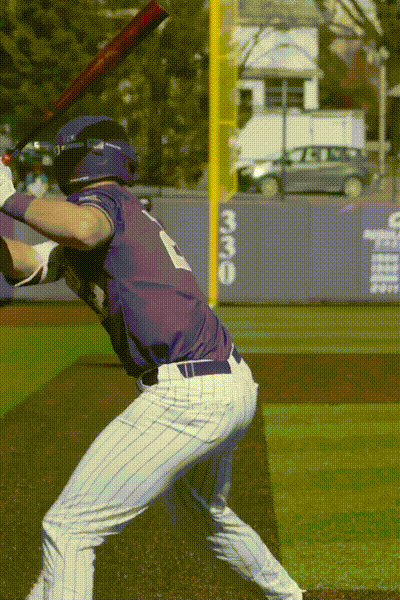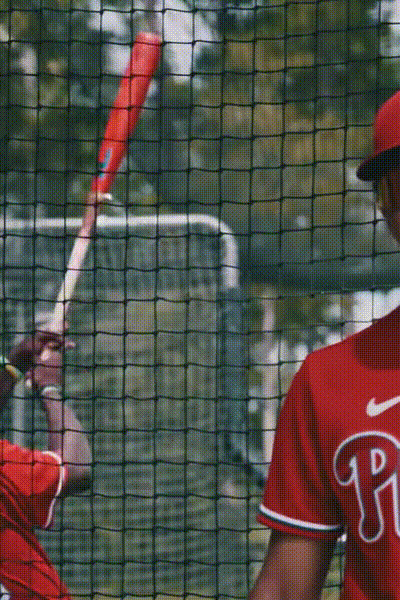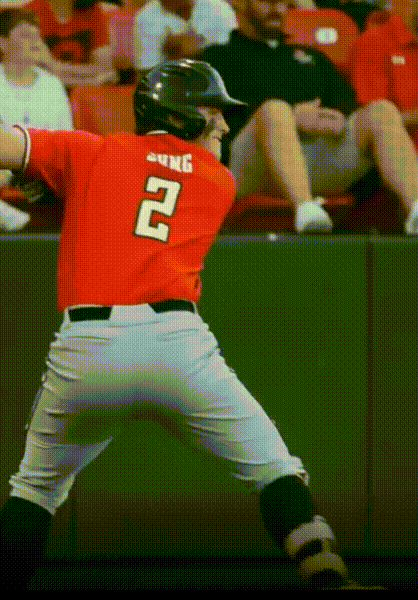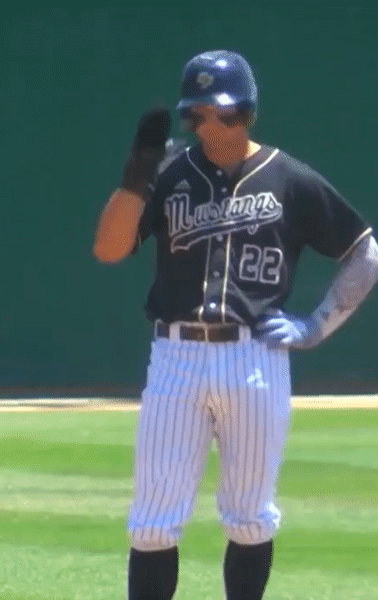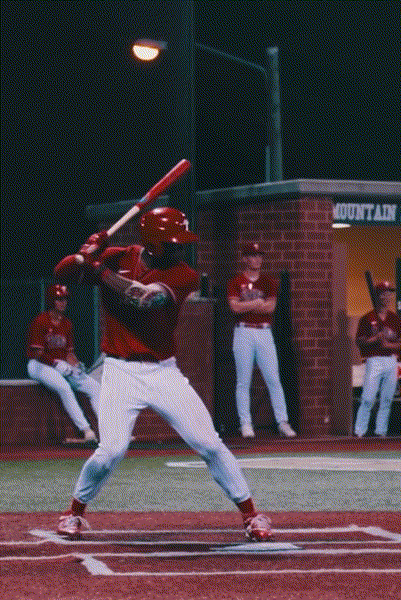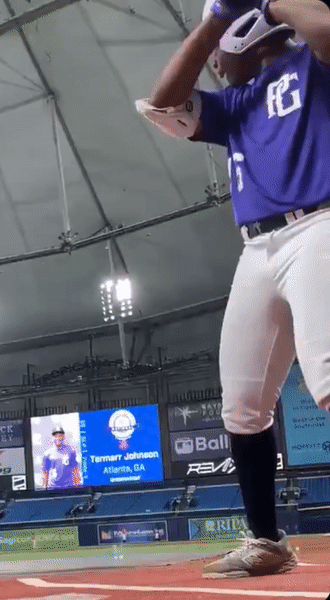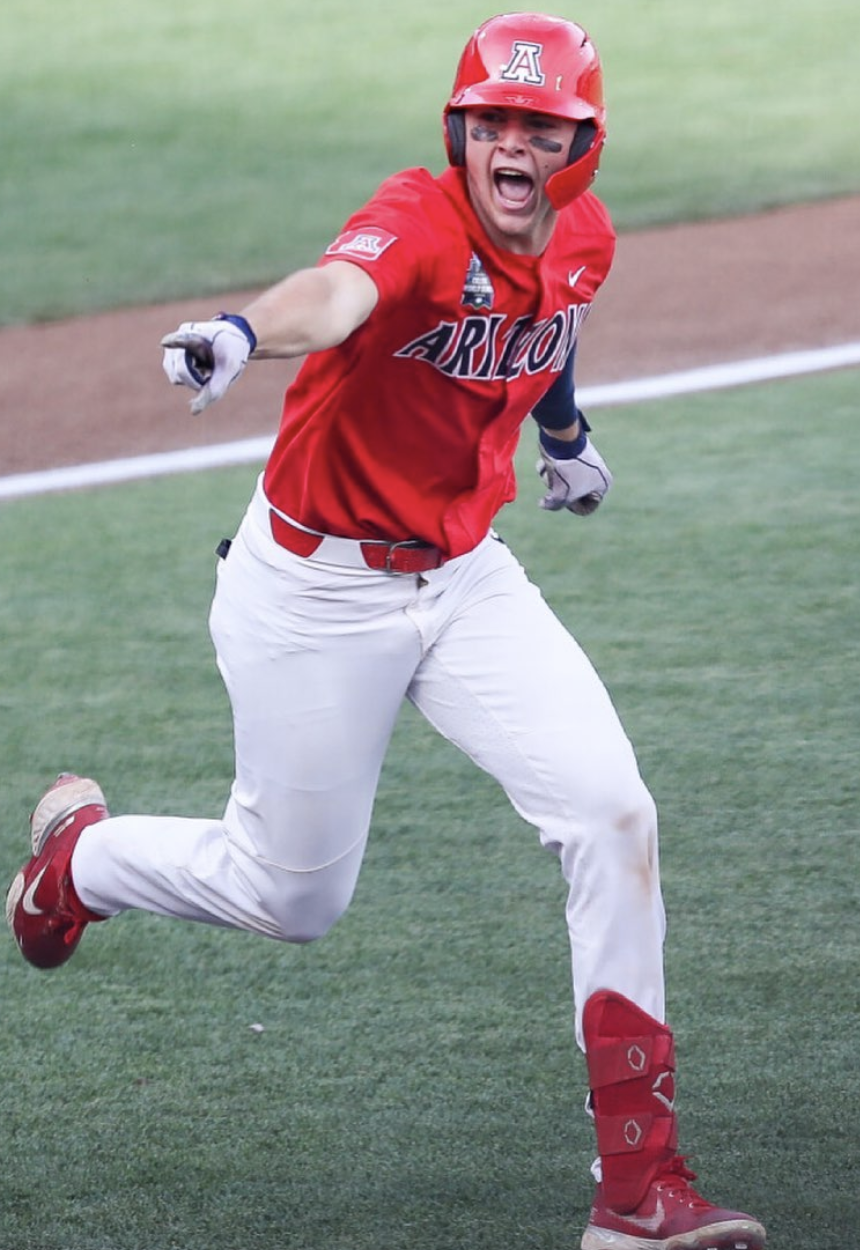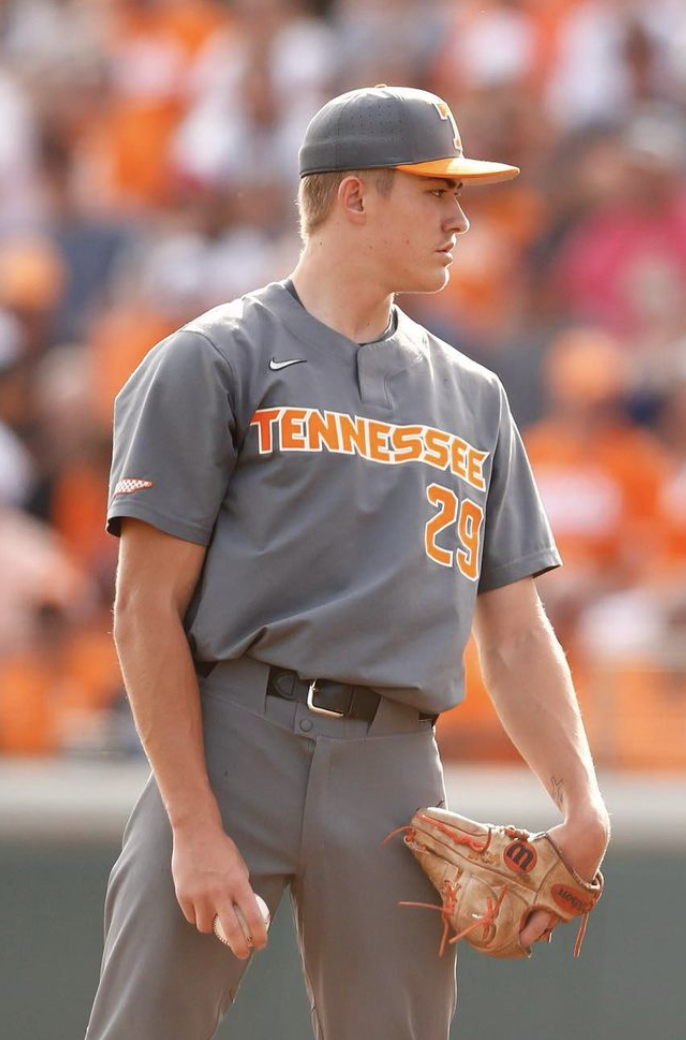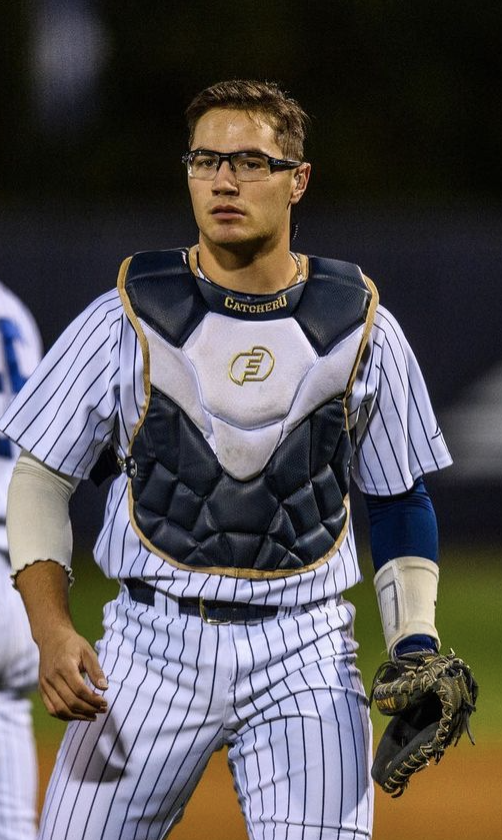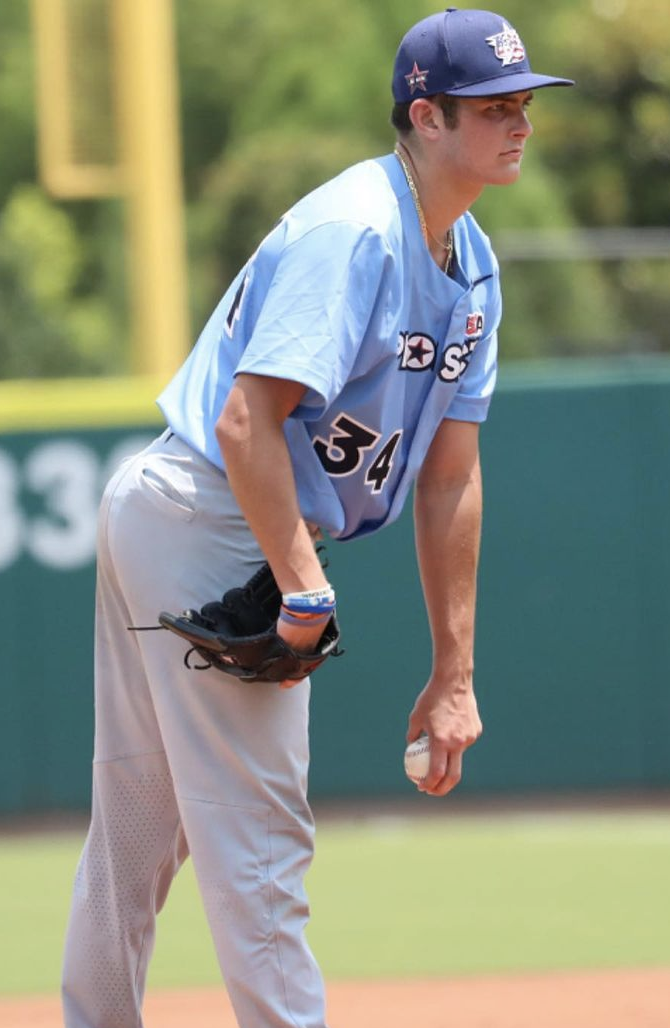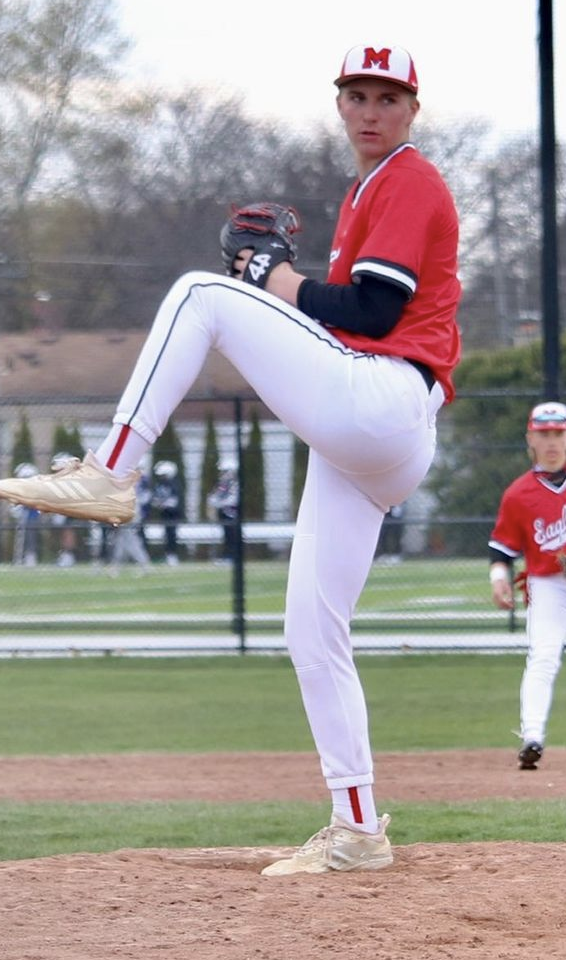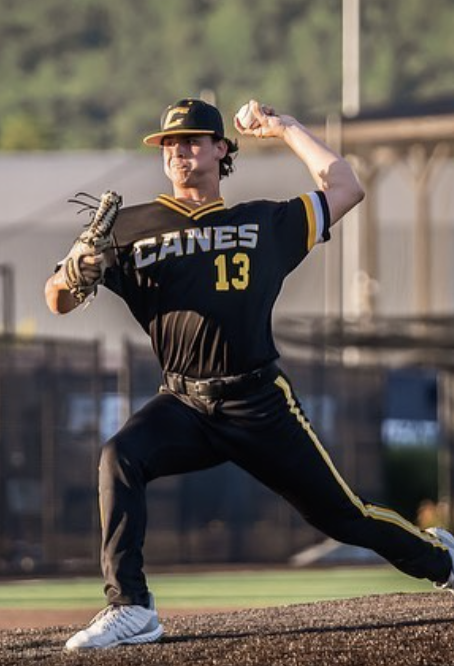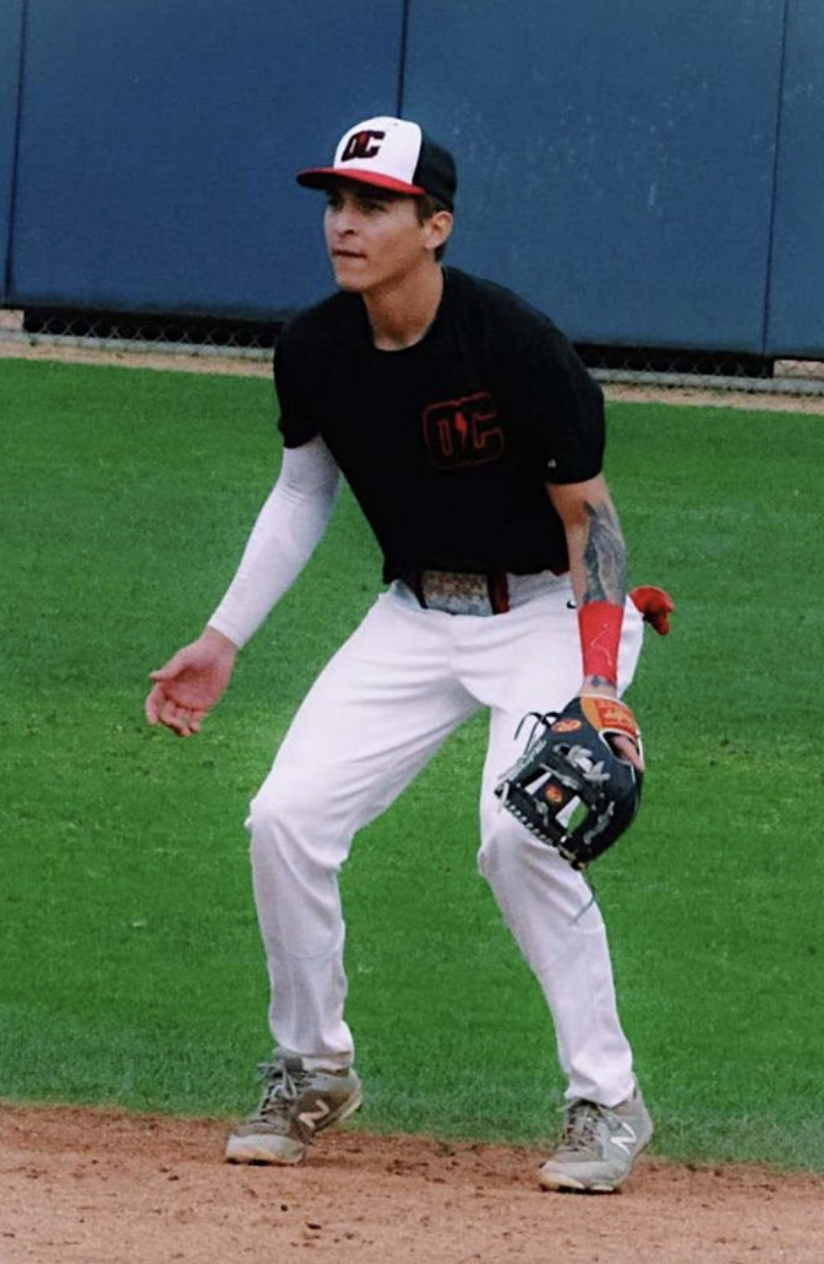2022 MLB Draft - Top 300 Prospects
A new year, a new board and new ranks. With college ball right around the corner and more industry insight at our fingertips, it’s time to reshuffle the top prospects for the 2022 class. As always, our boards are based on three pillars:
Our team’s Live Looks. We’ve got every corner of the country covered.
Trackman, Rapsodo and big data evaluation.
Conversations within the industry! What are scouting executives, cross-checkers and scouts seeing at the ballfields?
This Top 300 really reinforces a few things we’ve always believed…
This college crop of hitters is good. Really good. And deep.
The high school pitching in this class has the potential to be one of the stronger groups in recent memory.
While college pitching isn’t particularly top-heavy, there looks to be some pretty good value plays in the second and third round region this year. There’s some really big fastballs available in the Top 100 or so picks.
1. Chase DeLauter
Outfield, James Madison
DeLauter is a physical specimen. At 6-foot-4, 230 pounds, the product of Martinsburg, West Virginia can really bang at the plate. He burst onto the scene in 2021, slashing .386/.508/.723 with six homers and seven stolen bases in just 26 games. He worked 25 walks and punched out just 14 times. DeLauter has showcased his talents in the Cape Cod League as well, surging confidence in his abilities with big league scouts. Believers see an above average-to-plus hitter with easy plus, potentially plus-plus raw power. He has a disciplined eye at the plate that should translate to pro ball well. In the field, it’s a plus-plus arm in a corner with rangy speed and sound fundamentals. DeLauter clocked a 6.4-second 60 at James Madison's pro day, so he's every bit that of a plus runner as well. James Madison has not produced a first round pick since 2007. All signs point toward that changing in 2022.
2. Druw Jones
Outfield, Wesleyan HS
Jones has some of the most explosive athletic ability in the 2022 class and the namesake to draw in fans. The bat-to-ball skills here are impressive. Jones has really seen his raw power take enormous steps in the last several months with most scouts comfortably placing plus grades on the juice. At 6-foot-3, Jones has a prototype frame that will undoubtedly stick in centerfield thanks to top-of-the-scale speed and impressive on-field instincts. He may end up an elite defender like his dad thanks to terrific speed and a plus arm to go along with it. Some scouts have envisioned a potential shortstop here too. He produces big barrel velocities with violent hands and an aggressive, whippy swing plane. He gets fantastic extension at the plate as well. The entire package is incredibly advanced. Evaluators want to see Jones quiet down his loading mechanism and iron out his timing at the plate moving forward. It's about the only thing left in unlocking what could be superstar potential.
3. Jace Jung
Third Base, Texas Tech
Jace, the younger brother to 2018 first round pick Josh Jung, can flat out mash. A power-oriented corner infielder, Jung hit almost .500 as a senior in high school before stepping in and starting immediately for the Red Raiders. He hit 4 home runs in 16 starts for Texas Tech in 2020 and pumped out 21 more as a true sophomore in 2021. His .337 average was among the best in the Big 12. At 6-foot, 205 pounds, Jung is a thick, super strong middle infielder with serious thump at the plate. He draws a ton of walks and limits his strikeouts to healthy levels. A second baseman now, Jung could probably move to third base at the next level. He’s got an average arm and fringy lateral mobility, but he’s quick enough on his feet where scouts think he may be able to handle the hot corner. That said, we’re certainly talking about a bat-first prospect who could eventually end up a plus-plus hitter with plus juice.
4. Brooks Lee
Shortstop, Cal Poly
A name many expected to hear called in the 2019 MLB Draft, Lee decided to forego MLB to play for his dad at Cal Poly. Listed at 6-foot-2, 205 pounds, Lee is an extremely physical, barrel-chested shortstop with a significant strength throughout his frame. Lee carries his size extremely well on the dirt where his fluidity and huge arm really stand out. He receives high marks for his instincts and leadership on the field, captaining the defense in-between plays. A switch-hitter with power from both sides, Lee showcases a plus hit tool and thump. It’s above average raw power that he’s getting into, spraying missiles to all fields. Scouts believe there’s more game power coming., though he will probably never be a "power hitter" at the next level. Lee may eventually have to shift to third base. His toolset fits the position nicely. He’s a fringy runner, but his athleticism more than makes up for any foot speed he may lack. There's a history of nagging back injuries here, so evaluators will keep a close eye on his health moving forward.
5. Elijah Green
Outfield, IMG Academy
One of the most exciting players in the country, Green is a do-it-all, powder-keg package of explosivity and bottled energy on the diamond. Already 6-foot-3, 225 pounds, he’s a physical specimen built different than his peers. Simply put, there’s not much Green cannot do. Some evaluators believe he could be a plus hitter with plus-plus raw power, and he’s already tapping into that juice in-game. He’s currently at least a 70-runner with a 70-arm as well. There's definitely some swing and miss in his game, so that’ll be the one thing scouts are keeping an eye on. There aren’t too many warts in his game. Green is a very special talent, some calling him a generational player, that teams will undoubtedly covet at the top of the draft.
6. Termarr Johnson
Second Base, Mays High School
Despite his size, Johnson has some of the best bat speed in the entire class. He has a chance to be a really special hitter when all is said and done. He's a thunderous hitter with quick, explosive actions at the plate. It's comfortably plus raw power, and he's getting into it in-game already. Johnson covers the zone extremely well and uses the whole field, displaying big opposite-field juice when he lets the ball travel. He's already a muscled up, thick middle infielder, so his ultimate home on the dirt will likely be dictated by what direction his body goes as he works his way up the developmental ladder. Currently a shortstop, Johnson probably figures to end up at second base or third base long-term. This is an elite-level bat.
7. Daniel Susac
Catcher, Arizona
A big, tall, power-hitting catcher, Susac immediately brings back visions of Matt Wieters at Georgia Tech. Susac has a very good arm behind the plate, and more explosiveness and lateral mobility than most catchers his size do. But this guy will make his money with the bat. A potential plus hitter with plus power, Susac projects a middle-of-the-order impact bat, a run producer and an impact defender up the middle of the field. Susac's batted-ball data surpasses that of Henry Davis from 2021. The kid can bang.
8. Dylan Lesko
Right-Handed Pitcher, Buford HS
Everything comes awfully easy to Lesko on the mound. He’s considered one of the more polished arms in the class featuring an easy, fluid delivery with a four-pitch mix. Lesko’s mechanics are simple and repeatable. It’s effortless velocity without the violence or head whack that can derail a young pitcher’s career down the road. Lesko really gets into his lower half and shows exquisite efficiency down the bump. It’s a high three-quarters delivery. The heater has been up to 99, but more comfortably sits 93-96 most nights. Changeup is his best secondary, thrown with plenty of intent featuring fading action into the back foot of righties and darting away from lefties. He has a slider and a curveball, both of which flash plus at times with big spin rates and advanced command. He has very good feel of all four pitches and is more than willing to sequence backwards. Some believe Lesko represents the best prep pitching prospect the MLB Draft has seen since Hunter Greene or MacKenzie Gore.
9. Brock Jones
Outfield, Stanford
A two-sport stud, Jones played football at Stanford his freshman year before eventually giving it up to focus on baseball. That appears to be a good decision. An ultra-physical, muscled-up outfielder, Jones is tooled up across the board. The 6-foot, 205 pounder hit .311 with 18 homers and stole 14 bases in 2021. His strikeout rates remained healthy and he drew an immense amount of walks. Jones has a sweet, compact left-handed swing coming from a wide base with an all-fields approach. He has a ton of pull-side juice and can really impact a baseball into the left-centerfield gap. He’s at least an above average runner, maybe plus. He’s a solid average defender with a fringier arm; a toolset built for centerfield with more reps and seasoning. Given the athleticism and trajectory of his game, many believe Jones’ game will continue to grow and flourish as he gets more and more comfortable committing to baseball full-time. For now, it’s above average tools across the board with the exception of the throwing arm.
10. Jacob Berry
First Base, LSU
Simply put, one of the best hitters in the 2022 class. A year removed from anchoring the Arizona Wildcats lineup, Berry transferred to LSU to follow Jay Johnson. Berry was not only arguably the best freshman in college baseball in 2021, you could make the argument he was one of the best players in the country regardless of age. He's a potential plus hitter with plus power. His optimized swing is allowing the power to play immediately. He's a physical, imposing specimen with power to all fields and enough speed to be given some credit on the base paths. He'll get a shot to play third base at the next level, though some believe he'll have to shift to first base. Scouts want to see the swing and miss tick down a few points, but it's nothing terribly alarming at this stage.
11. Gavin Cross
Outfield, Virginia Tech
Virginia Tech isn’t the kind of school you would expect to produce a potential first round talent, but it’s hard to ignore what Gavin Cross brings to the table. He’s been a menace at the top of the Hokies lineup throughout his career, ending 2020 with a .369 batting average and following that up with another big 2021 campaign. Cross has proven he can hit elite velocity and punish mistakes spinning in the middle of the plate. He uses all fields with big bat speed and has shown huge power potential. His exit velos are among the best in the entire country. In the field, he’s manned right field for a majority of his career where he’s shown off a plus arm. He could find himself as the first Virginia Tech player drafted in the first round since Joe Saunders went 12th overall in 2002.
12. Brandon Barriera
Left-Handed Pitcher, American Heritage HS
Simply put, Barriera has some of the best stuff in the 2022 class, from the left side no less. It’s a stress-free operation with very little effort and seamless fluidity. Barriera has been up to 97 with significant arm speed and athleticism on the mound. He sits 92-94 in late innings. He’s got a wipeout slider that tunnels the heater well, diving on right-handed hitters and disappearing for lefty bats. He’s shown good feel for a changeup with solid separation and depth. He’s also shown a cutter to lefties. It’s a bulldog mentality, filling up the strike zone and coming right at hitters with attitude. Just 6-foot-1, 180 pounds, Barriera is still getting more and more physical as he matures into more strength.
13. Landon Sims
Right-Handed Pitcher, Mississippi State
Landon Sims has operated as a shutdown reliever for the Bulldogs for much of his career, but his move to the rotation in 2022 came with a ton of intrigue. Sims has one of the most impressive fastballs in the 2022 class with whiff rates in the top five in the entire country in 2021. He was up to 98 last season with plus riding action, filling up the strikezone with his heater close to 70% of the time. He's got a dynamic slider that plays well off the fastball as well. There's also a changeup, though it lags behind his two premier offerings. Sims has one of the better arms in college baseball and figures to be a popular name in draft circles.
14. Blade Tidwell
Right-Handed Pitcher, Tennessee
When it comes to Tidwell, the conversation starts and ends with the fastball. Tidwell has consistently been up into the upper-90s and has touched 99. If the command ticks up in 2022 and he learns to shape and spot his fastball at the top of the zone, watch out. Tidwell is working to develop a heater with more hop, focusing on subtle changes with Team USA this past summer. By winter, he was getting 17-21 inches of IVB on the fastball consistently. Tidwell features a sweeping slider in the mid-to-upper 80s as well as a fringier mid-70s curveball that he's working to refine. It’s a super-athletic body and a quick arm. There’s definitive starter upside here. If Tidwell throws more strikes in 2022, he could be the first college arm off the board.
15. Kevin Parada
Catcher, Georgia Tech
Parada was one of the heralded catchers in the 2020 draft class. His bonus demands ultimately pushed him to Georgia Tech. It's above average raw power that he's shown he can get to in-game. He’s got extremely strong hands that help him manipulate the barrel and punish balls deep in the zone with authority. Parada has a picturesque swing that uses all fields and doesn’t sell out for power. It’s organic strength and loft that comes naturally. Behind the plate, it’s a plus arm with better athleticism than you’ll find in most guys his size. Playing at Georgia Tech, Parada may get the opportunity to call his own games in 2022, a luxury not afforded to most college catchers these days. That advanced skill set, both mentally and physically, should help his draft stock. Parada’s profile is carried by the plus bat, but he’s an improving defensive catcher who figures to stay behind the plate as he transitions into professional baseball. He may be the next great backstop to come out of Georgia Tech following Jason Varitek, Matt Wieters and Joey Bart.
16. Noah Schultz
Left-Handed Pitcher, Oswego
Schultz is an ultra-projectable behemoth at 6-foot-9, 210 pounds. For a kid his size, he repeats his delivery really well and certainly has a good feel for pitching and the strike zone. There's some real funk coming from a low, short-arm vertical release, similar to Max Scherzer's release. His fastball velocity has been 89-91 MPH and has touched 94 with serious life. He has a slurvy breaking ball with massive spin rates, as well as a slider in the mid-to-high 70's and a good fading change-up in the low-80's. The breaking ball may end up a plus-plus offering, reminiscent of the ol’ Andrew Miller slider that may him so dominant throughout his career. There's a ton to dream on from this southpaw and the funk, deception and spin rates suggest a super-high ceiling.
17. Jackson Ferris
Left-Handed Pitcher, IMG Academy
Ferris has a long, yet relatively clean arm action and has plenty of projection on his frame to add strength and velocity. Primarily 93-95, Ferris has been up to 97 with a fastball that showcases huge riding life. His curveball has solid depth with big, tight spin in the mid-70's and there is a change-up in the low-80's that needs refinement. The fastball is the calling card here and it absolutely blows hitters away. Being a left-handed pitcher that can reach back for high-90s cheese, and given his 6-foot-5-inch frame, scouts are drooling over what the final package could look like here a few years down the road.
18. Zach Neto
Shortstop, Campbell
Neto really exudes confidence and athleticism at the plate. He's an aggressive hitter who extends really well and has a knack for catching the ball out in front, tapping into a lot of his raw power. He's a good hitter with a track record of success at school and on the cape as well. It’s a rhythmic swing that relies on timing, though Neto has shown real feel for putting his body in a position to damage the baseball. Some of the quirks in his setup and swing have been compared to Javier Baez. Really good feel for tempo on the dirt with soft hands and body control. Arm might only be average, but Neto can make throws from any angle. Whether he ends up at second base, shortstop or anywhere else on the diamond, Neto has a pretty complete profile that will appeal to teams.
19. Brock Porter
Right-Handed Pitcher, Orchard Lake St. Marys
Porter is a cold-weather arm that brings plenty of heat to the table. The fastball has been clocked as high as 99 MPH, casually sitting 93-95 with plenty of riding life. His best secondary is a changeup that's at least plus, though some evaluators already believe it projects plus-plus. He throws the cambio with serious conviction and parachute-like action in the upper-70’s with enormous separation from his heater. Metrically, it’s a strong offering showcasing optimal spin rates in the 1400 RPM range. He’s got an inconsistent slider that can be wicked at its best, though in most cases it's squarely average, generally in the low-80s. He’s also got a curveball in the mid-70’s to round out a full arsenal. It’s a strong, athletic 6-foot-3 build with broad shoulders and and long levers. Three-quarters delivery with explosive arm speed. Porter continues to show improved command and control as the body matures. Evaluators would love to see the breaking ball consistency improve as we approach July.
20. Robert Moore
Second Base, Arkansas
Son of Kansas City Royals GM Dayton Moore, Robert was a highly regarded 2020 prep prospect before enrolling early at Arkansas prior to the 2020 season. A switch-hitter at the plate, Moore has a short and compact swing and has hit for average and power in his career for the Razorbacks. For a smaller player, Moore’s power has been surprising, tapping into a good bit of juice in Fayetteville. It's not huge raw power, moreso average, but Moore gets to it with his swing plane and pull-side efficiency; a la Alex Bregman. He’s got more pop from the left side of the plate, but both swing mechanics are similar. Moore oozes athleticism and has shown great range and defense at second base. Some scouts believe he has a shot at playing shortstop, but if he's forced to stick at second base he projects a 70-grade glove.
21. Carter Young
Shortstop, Vanderbilt
Young is revered for his actions on the dirt where he's comfortably an above average defender, though most believe his athleticism and twitch suggest a plus defender at the next level. The throwing arm also comfortably grades out above average, aided by his experience behind the plate as a prep. A switch-hitter, he’s beginning to tap into game power at the plate, especially from left side. His batted-ball damage metrics rank among the best in the country. Young was a little banged up toward the latter half of the 2021 season. Fully healthy again in 2022, he figures to be one of the more intriguing hitters in the SEC, though admittedly there's some swing and miss and strikeout concerns here that need ironing out. To reach his first round ceiling, scouts want to see marked improvement in the bat-to-ball. Even if Young is only a 40 hitter with 50+ game power, that's an appealing profile to evaluators considering the pillars on defense.
22. Tristan Smith
Left-Handed Pitcher, Boiling Springs HS
Smith is one of the top lefties in a loaded 2022 prep class. A strong 6-foot-2, 200 pound frame, Smith fits the profile of a future power pitcher with a rather effortless, crossbody delivery with plenty of deception. Smith’s fastball has been clocked as high as 96 MPH, usually sitting in the 90-94 MPH range. It’s an explosive pitch that comes out of a tough angle with high spin rates. His primary secondary is a sweepy slider that has primarily sat in the high-70’s that he commands well. Much like the fastball, his breaking ball has huge spin rates, reaching as high as 3000 RPM. He rounds out his arsenal with a change-up in the low-80’s that he has good feel for.
23. Dylan Beavers
Outfield, California
Beavers was one of the best players in the PAC in 2021. A tall, rangy outfielder, Beavers gets high marks for his hit tool and raw power. There's some loft in his swings, as evidenced by his 18 homers last season. Beavers can expand the zone at times as he's an aggressive hitter who looks to do damage and drive in runs. There's some speed to his game too, and natural instincts on the base paths, though he’s likely only an average “athlete” which limits his ability to make the highlight reel play. He best projects into a corner where his above average arm, length and wheels can best be optimized. Some have compared the entire package to a Christian Yelich type of profile. High praise, indeed.
24. Kumar Rocker
Right-Handed Pitcher, Independent
After being selected 10th overall in the 2021 MLB Draft, the New York Mets and Kumar Rocker could not come to an agreement on a pro contract. Because of this, Rocker will give it another go in 2022. The weaponry is well-chronicled. A fastball that has been up to 98 but more often sits 92-95. A wicked breaking ball with tremendous depth has been graded as high as plus-plus by evaluators in the past. A cutter that flashes above average and a changeup that is below average more often than not. Rocker has the making of a big league starting pitcher with at least three pitches in his arsenal. There's some concern over his medicals after reports surfaced that he failed his physical with the Mets post-draft. Rocker's pitching elbow will be a point of emphasis for scouts as evaluators try to determine where he fits inside this years class.
25. Mikey Romero
Shortstop, Orange Lutheran
Romero is a solid defender on the dirt with obvious strengths in barrel-manipulation and timing cadences at the plate. He can really hit, and in a class lacking polish within the prep bat ranks, Romero presents safety and projection at a premium position. He’s shown the ability to get to any pitch, sometimes expanding the zone but keeping the at-bat alive. He's a gap hitter right now and doesn't project to tap into a ton of power as he matures, though 40 game power is squarely within reach. Most evaluators believe he'll have no issue sticking at shortstop where his fantastic footwork, rhythm, athleticism and internal clock play beautifully. Romero needs to get stronger and add impact at the plate, but the swing is picturesque and the hit tool is very real. Should Romero add some raw power to his game, the profile immediately accelerates. We think he’s a good bet to go earlier than where he’s featured on most boards.


